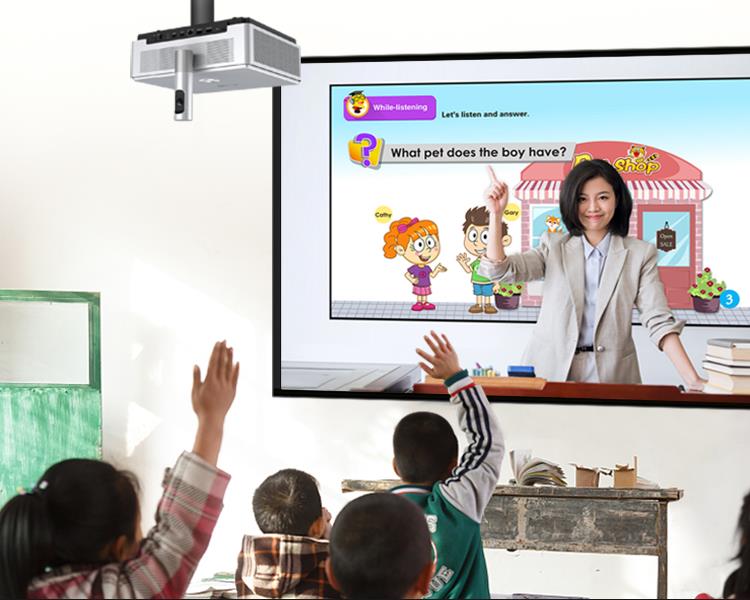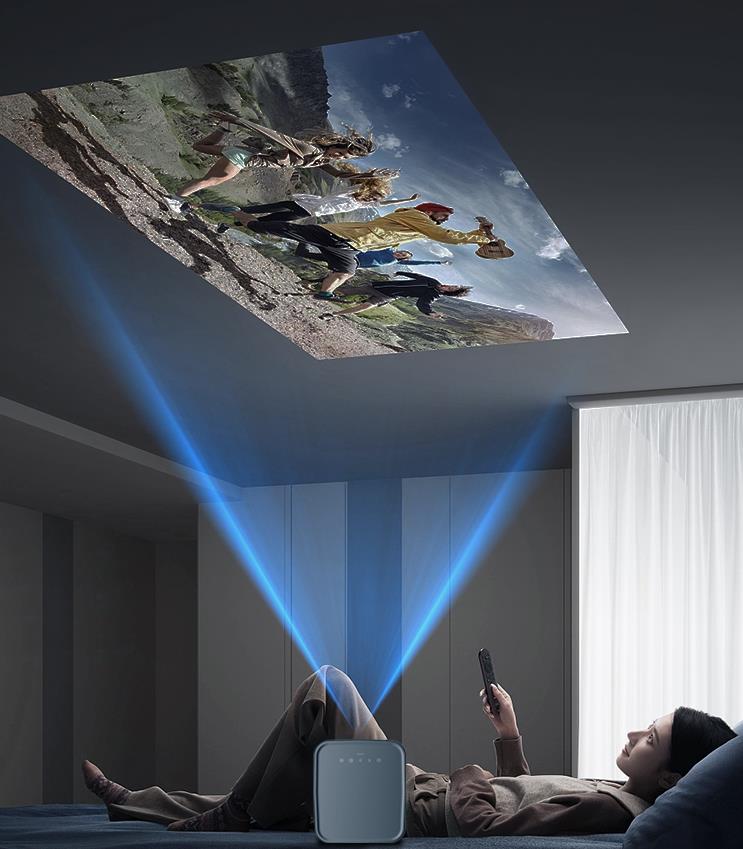To provide you with first-hand information about Huitou Company
 2025-04-15 11:00:21
2025-04-15 11:00:21
 Click:
Click:


Whether it's for a home theater, business meeting, or exhibition, projection technology has long been the core visual ele
Whether it's for a home theater, business meeting, or exhibition, projection technology has long been the core visual element. However, with so many projectors and installation methods available on the market, many users find themselves confused: what is the difference between front, rear, and side projection? Which one suits my needs the best?
With a team that has been in the projection industry for over 10 years, we've analyzed the pros and cons of each type of projection based on real-life scenarios to help you make an informed decision.

Technical Principle: The projector and viewers are on the same side of the screen, and light is projected directly onto the screen, then reflected to the viewers' eyes.
Key Advantages:
Typical Scenarios: Home living rooms, small meeting rooms, classrooms, etc.
Considerations:
It's recommended to use an anti-glare screen to reduce ambient light interference (data: anti-glare screens can increase contrast by up to 30%).

Technical Principle: The projector is placed behind the screen, and light passes through the screen to reach the viewers.
Key Advantages:
Typical Scenarios: Museums, retail window displays, high-end meeting rooms.
Considerations:
Professional installation is more expensive (about 2-3 times the cost of front projection).

Technical Principle: Side projection is achieved through keystone correction technology, ensuring a rectangular image from the side.
Key Advantages:
Typical Scenarios: Rental apartments, mobile office setups, outdoor family activities.
Considerations:
Prioritize selecting a projector with brightness ≥ 2000 lumens to reduce light loss after correction.

| Dimension | Front Projection | Rear Projection | Side Projection |
|---|---|---|---|
| Installation Complexity | ★★☆ | ★★★★ | ★★☆ |
| Picture Quality | ★★★☆ | ★★★★★ | ★★★☆ |
| Space Requirements | 1-3 meters in front | ≥ 1.5 meters behind | No strict limits |
| Budget Range | $300-$1000 | $2000-$20000+ | $300-$800 |
| Recommended Audience | Home users | Businesses/Institutions | Renters/Outdoor Enthusiasts |
There is no absolute "best" projection method – the key is finding the one that suits your space, budget, and needs. If you're still unsure about which home projector to choose, feel free to contact our engineering team for a free, customized solution tailored to your requirements.